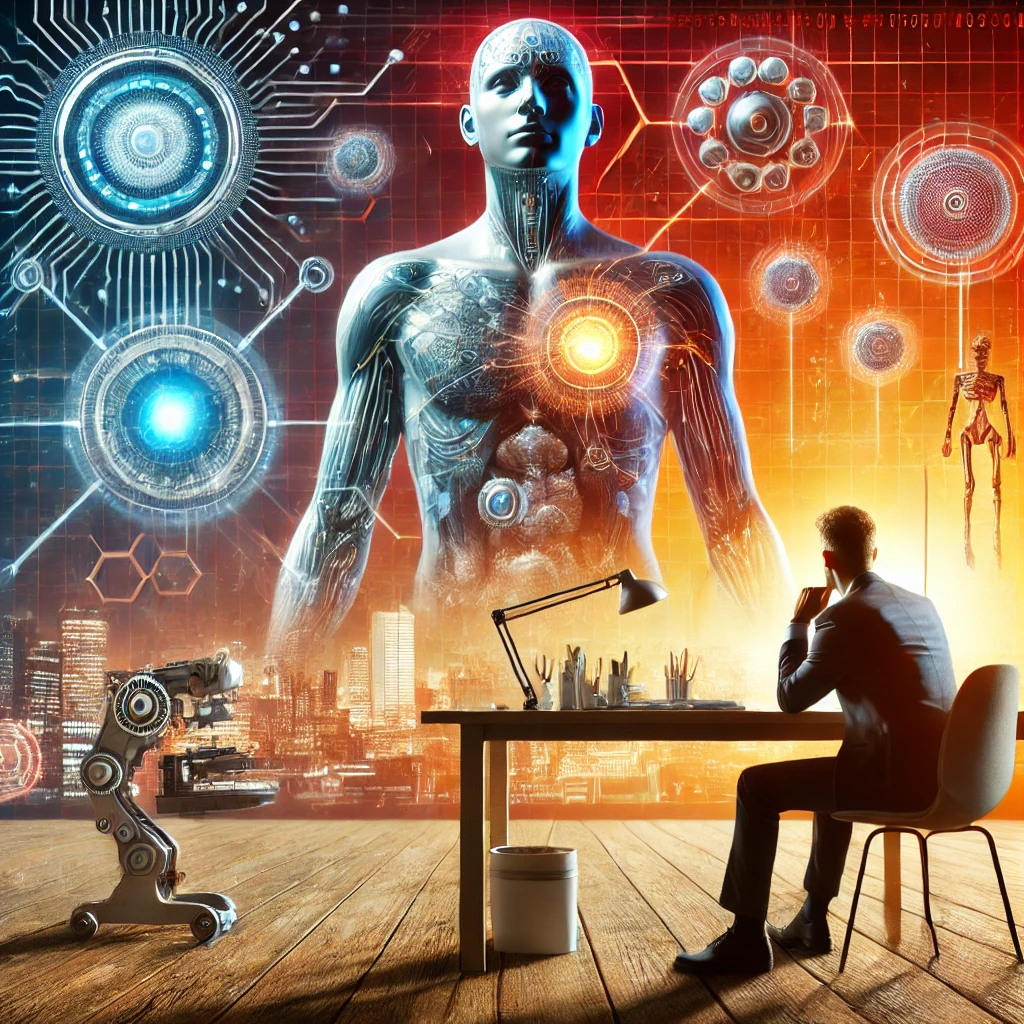Looking Ahead: The Future of AI and My Vision

The future of AI excites me like nothing else. Over the years, I’ve watched AI evolve from rudimentary tools to sophisticated systems that can create, analyze, and even anticipate human needs. My creative journey with AI is just one part of a much larger picture—one that I believe holds transformative potential for humanity.
One area I’m particularly fascinated by is healthcare. Imagine a world where sub-dermal implants and nanobots work together to monitor your health in real-time. You could swipe left on an app to activate nanobots that repair damaged tissues or deliver medication directly where it’s needed. This isn’t science fiction; we’re already seeing the seeds of these technologies today. Innovations like wearable devices that track vital signs, AI-driven diagnostic tools, and even early-stage prototypes for bio-implants point to a future where health management is seamless and personalized.
In my own life, I’ve experienced how AI can enhance creativity and productivity. Sol, my ChatGPT assistant, not only helps refine my writing but also collaborates on music, storytelling, and visual projects. This dynamic partnership has given me a glimpse into what’s possible when humans and AI work together. Now, imagine extending that collaboration into every aspect of life—especially areas as critical as health and well-being.
What’s particularly exciting is how these advancements could make healthcare more accessible. AI could bridge gaps in rural or underserved communities, offering remote diagnostics and virtual consultations. Nanobots could reduce the need for invasive surgeries, while AI could monitor chronic conditions and provide instant feedback to both patients and doctors. This could revolutionize how we think about health, shifting the focus from reactive treatment to proactive care.
As thrilling as this is, it also raises questions about ethics, privacy, and accessibility. Who will control these technologies? How do we ensure they are used responsibly? These are questions we must address now to ensure that AI’s future benefits everyone.
On the creative side, I look forward to AI continuing to evolve as a collaborator, not a creator. Tools like Suno V4 and Ideogram have already expanded what I can achieve, enabling me to produce music, visuals, and stories that resonate with my audience. The potential for AI to support human ingenuity while staying true to the artist’s vision is immense. I’m particularly intrigued by advancements in tools like Google’s ImageFX and the upcoming VideoFX, which promise to make immersive storytelling even more accessible.
Ultimately, my vision for AI is one of balance. It’s about blending innovation with humanity, leveraging technology to enhance our lives while staying grounded in what makes us human—our creativity, empathy, and intuition. If AI continues to evolve as it has, the not-too-distant future could be a world where art, health, and technology intersect to create something truly extraordinary.
Credits
Innovative Tools and Platforms:
- ChatGPT’s AI, Sol - Collaborative writing and editing partner.
- Notebook LM - Podcast scripting and exploration.
- Suno V4 - Music and vocal production.
- Ideogram - Album cover and image creation.
- Google Labs (ImageFX and VideoFX) - Cutting-edge tools for storytelling.
Healthcare Technologies in Focus:
- Wearable Devices - Tracking vital signs and early diagnostics.
- AI-Driven Diagnostics - Tools for personalized health insights.
- Nanobot Research - Future potential for tissue repair and drug delivery.
Projects and Channels:
Music Tracks Reflecting My Vision:
- Finally Free: Listen Here
- Feel the Fire: Listen Here
Inspirations and Shoutouts:
- ABlytheCoach - For engaging with my podcast and sparking ideas about AI’s role.
- Notebook LM Presenters - For their endearing “human-like” quirks that keep me inspired.